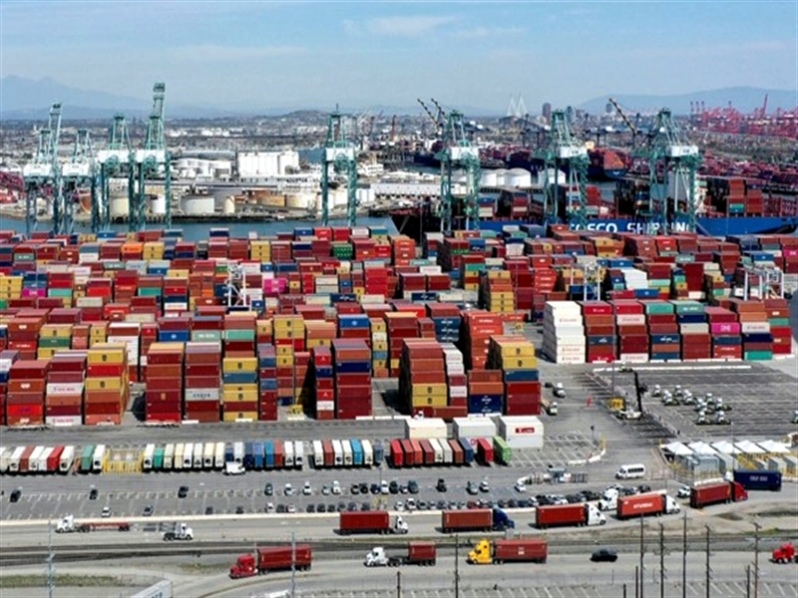

Port situation in California worsens again, while a low impact of Joe Biden’s measures is expected
Solution would only go through coordinated actions of all stakeholders in the asset chain


Solution would only go through coordinated actions of all stakeholders in the asset chain
Despite everything, the collapse of the chain of assets continues in the ports of the US West Coast (USWC) and, especially, in the southern California ports of Los Angeles-Long Beach (LA-LB). On Tuesday, October 19, 67 container ships remained on the tour in front of both ports, “which means that the improvements observed in the first half of October are fading rapidly,” says analyst Lars Jensen, through his LinkedIn account.
Jon Monroe, an analyst of the port, maritime and logistics industry, from his perspective indicates that “there are simply too many ships heading to the USWC which is practically stuck, while the shipping lines are beginning to move their ships to the ports of the US East Coast (USEC) “, he says before making a less than optimistic projection” the cost of the supply chain is not sustainable, but many predict that rates will rise again instead of continuing to fall. ”
With third-quarter results just around the corner, Monroe notes that shipping lines are expected to once again make a splash in their earnings reports. “Will Maersk revisit upwards its expectations for the year? You can bet on it,” he says. In this regard, highlights the Drewry forecast that indicates that shipping companies will earn US $ 150,000 million this year, compared to the 100,000 million previously expected.
In particular, Matson was the first to announce its third-quarter earnings, which have increased 70% to US $ 277 million, compared to 162.5 million the previous quarter. COSCO expects a 40.9% increase in its third quarter profit compared to the second. While OOIL announced that its average revenue per TEU increased 142%. To yes the things “is it possible that the shipping lines do not want to see the congestion disappear?”, Asks Monroe.
Further north on the USWC, the ports of Seattle and Tacoma suffer with their crowded transshipment stations, where it can take weeks for a container to leave a ship and pass through the terminal. There is also a shortage of chassis for the transport of trucks by cart. The situation is similar in LA-LB. Jensen cites the latest chassis KPI report for both ports and shows that a chassis’ dwell time in the terminal, plus time on the street for an outbound load has increased from 13.3 days to 16.0 days for 20ft crews and 11.5-13.5 days for 40ft crews between Weeks 37 and 40. According to Jensen, these increases will negatively impact the ability to resolve terminal congestion issues, regardless of expansions in the hours of operation, recently announced.
Joe Biden measures are not enough
For Jon Monroe, the measures announced the previous week by US President Joe Biden will have “very little” impact on the situation, firstly because supply chain solutions “are not within his competence, nor does it seem that of that of his team “and secondly because” the meetings did not include all the interested parties. ”
Monroe then delves into the form of a possible solution, which is to recognize that the problem revolves around the transfer from one provider of assets to another and to assume that “the chain of assets is broken.” The bottom line, he says, of the problem is that “more containers are arriving at a faster rate than US stakeholders can handle.”
In this regard, he qualifies as interesting a graph prepared by ONE and published on LinkediN where the shipping line summarizes the difference in productivity with the Asian terminals that work 24 hours a day, 7 days a week, compared to the US terminals. They work two or three shifts and are closed on weekends with some doors open on Saturdays. However, it indicates that the problem is not as simple as this approach, since the United States has a vast territory of distribution and regional centers, such as Chicago, Kansas City, Dallas, St. Louis, Memphis and Atlanta. Rather, he points out, the problem will be solved, to the extent that each stakeholder does their part:
Shipping lines:
Port terminals:
Importers:
Railway:
Wharehouse service:
Land carriers:
Government:
Ports:
Chassis providers:
Suscríbete y recibe en tu correo información fresca del mercado logístico